Hearing
The Reverend Dr. David CM Taylor
dcmt@liverpool.ac.uk
This page is © David Taylor and The University of Liverpool, 1999
 Carpenter, RHS, Neurophysiology 3rd Edition 1996, Arnold chapter 6
Carpenter, RHS, Neurophysiology 3rd Edition 1996, Arnold chapter 6
 Bray, Cragg, MacKnight, Mills & Taylor, Lecture Notes on Human Physiology 3rd Edition, 1994 Blackwell Scientific Publications chapter 7 (part 4)
Bray, Cragg, MacKnight, Mills & Taylor, Lecture Notes on Human Physiology 3rd Edition, 1994 Blackwell Scientific Publications chapter 7 (part 4)
 Kandel, Schwartz & Jessell, Principles of Neural Science 3rd Edition, 1991, Elsevier chap 32
Kandel, Schwartz & Jessell, Principles of Neural Science 3rd Edition, 1991, Elsevier chap 32
If you are studying on 2LS50, our emphasis in the lectures has been on the peripheral mechanisms, rather than the central processing and pathways, which is covered rather well in the text books. You will be assessed on your understanding of the peripheral mechanisms. Try to pull in the material you gathered whilst performing your practical work.

Sound
 Is a travelling pressure wave
Is a travelling pressure wave
 has two variables
has two variables
 frequency (pitch)
frequency (pitch)
 amplitude (loudness)
amplitude (loudness)
 variations in pressure are small !
variations in pressure are small !
 less than 0.6% of atmospheric pressure for most intense sound imaginable
less than 0.6% of atmospheric pressure for most intense sound imaginable
Decibels
We use the decibel scale, which is important because equal increments in the scale represent equal increments in sensation
Not surprisingly we need a reference value, it is the pressure which corresponds to the quietest sound that Alexander Graham Bell could hear (2x10-5Nm-2). Clearly some people can hear quieter sounds than that, which are given -ve decibel numbers. The expression below gives the intensity of a sound (SPL - sound pressure level) in decibels.
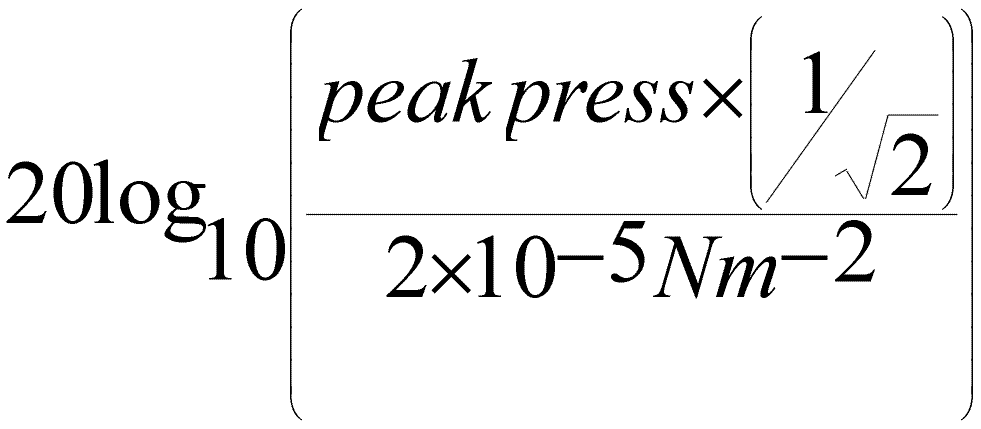

Impedance
 molecules in water have a greater resistance to movement than molecules in air.
molecules in water have a greater resistance to movement than molecules in air.
 greater presure is needed to give the same velocity or displacement
greater presure is needed to give the same velocity or displacement
 impedance of water is 1350 x that of air (which is 400 Nsm-3)! This is why you have to shout to be heard under water.
impedance of water is 1350 x that of air (which is 400 Nsm-3)! This is why you have to shout to be heard under water.
So there are two problems
We need
 an impedance transformer
an impedance transformer
 to amplify the sound
to amplify the sound
 a sound transducer
a sound transducer
 to convert the vibrations into electrical signals
to convert the vibrations into electrical signals

Sound is altered before it even reaches the eardrum.
Outer Ear
 Certain frequencies pass through ear better than others
Certain frequencies pass through ear better than others
 resonance
resonance
 The ear is also direction sensitive
The ear is also direction sensitive
 best location 45
best location 45
O from front

Middle Ear
Has the function of impedance matching, in order of importance...
 greater area of tympanic membrane than oval window MOST IMPORTANT !
greater area of tympanic membrane than oval window MOST IMPORTANT !
 lever action of the ossicles
lever action of the ossicles
 buckling of the tympanic membrane
buckling of the tympanic membrane

Inner Ear
Is where the sound is converted into an electrical signal. The sound causes the oval window of the cochlea to vibrate, and this in turn causes the basilar membrane to vibrate. It is wider at the apex of the cochlea and narrower at the base. If you remember making a ruler "twang" at school, you will know that a large displacement gives a low frequency sound.

The movement of the basilar membrane causes the movement of the hair cells within the Organ of Corti. Since they possess stereocillia which are embedded in the tectoral membrane (which is rigid), the stereocillia bend,
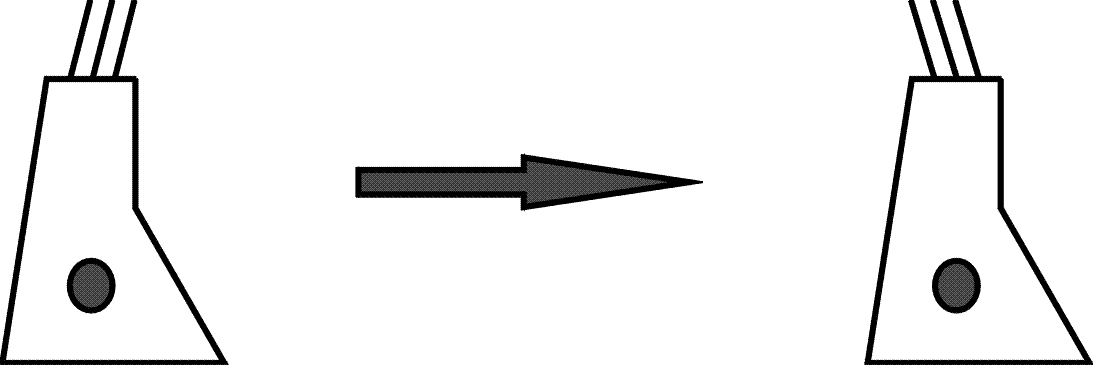
The cells of the stria vascularis generate a potential difference. Older forms of loop diuretic drugs blocked the ion pumps in the stria vascularis as well as in the loop of Henle. This resulted in iatrogenic (look it up....) deafness, due to the inability to maintain an ionic gradient between the scala media and the scala tympani (sm, st respectively, sv stands for stria vestibularis).

The movement of the hairs on the hair cells changes the resistance to current flow, and the current flow causes the release of transmitter, which excites the primary afferent neurone terminals.
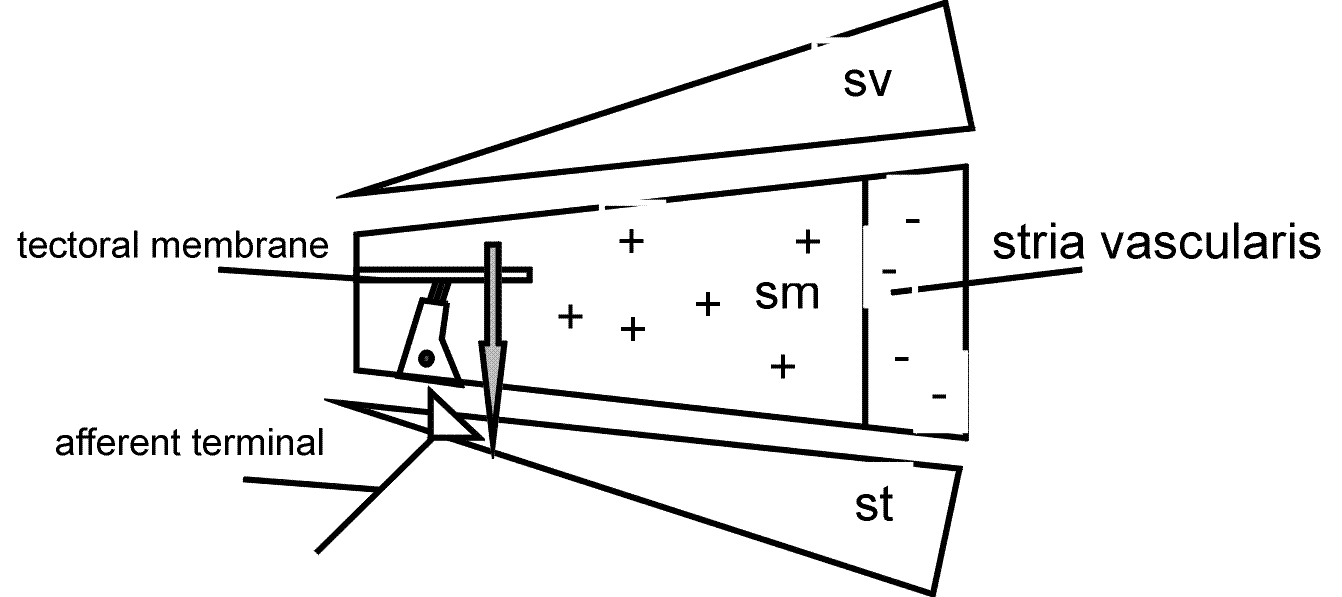
Because different parts of the basilar membrane are caused to vibrate by different frequencies, the auditory nerves exhibit tuning curves.
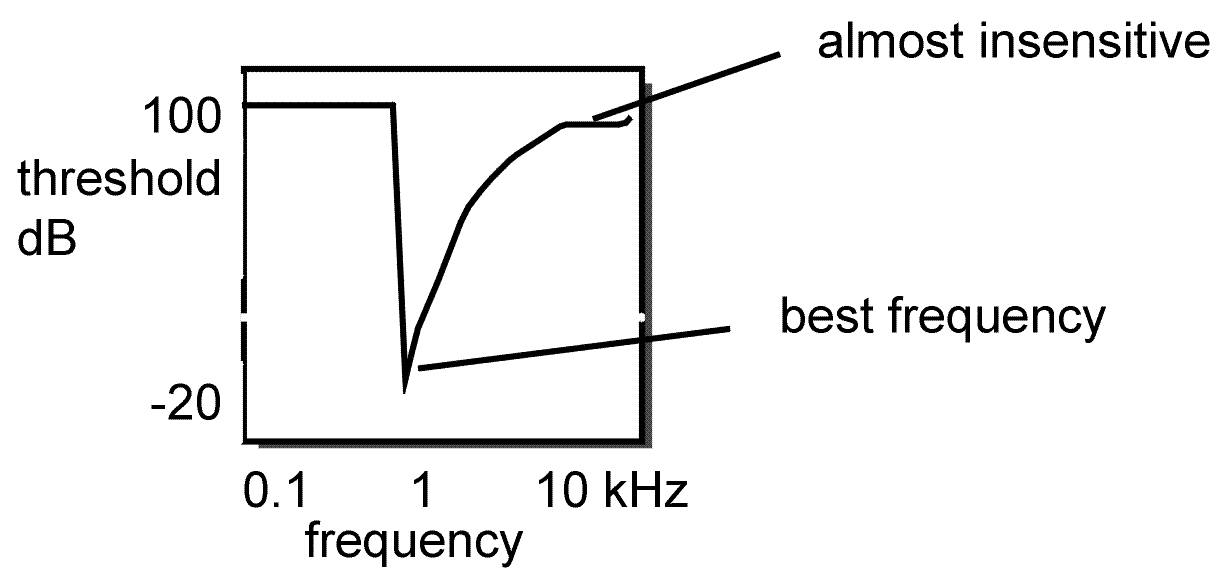
The fine tuning of the mechanism owes a considerable amount to the outer hair cells, which are disturbed by some types of antibiotic.
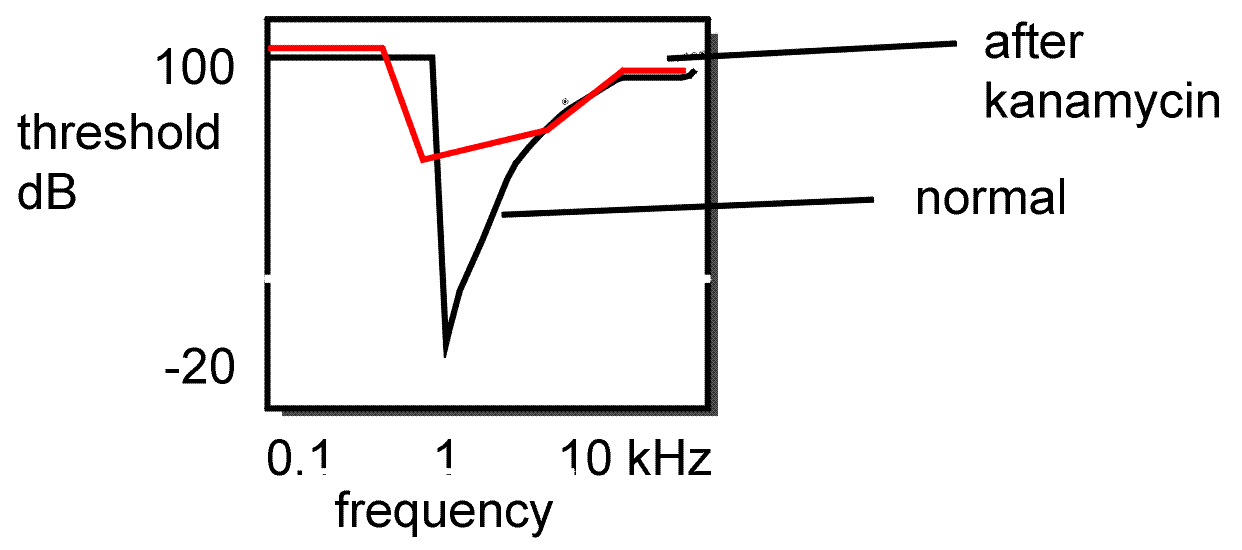

Surround Inhibition
 Is important and similar in principle to surround inhibition within the cutaneous sensory system.
Is important and similar in principle to surround inhibition within the cutaneous sensory system.
 It allows us to distinguish between two tones of similar frequency.
It allows us to distinguish between two tones of similar frequency.

Sensorineural deafness
 auditory nerve
auditory nerve
 tumor
tumor
 Cochlear
Cochlear
 noise trauma
noise trauma
 drugs
drugs
 infections
infections
 congenital
congenital
 presbycusis
presbycusis
Conductive deafness
before the cochlea
 immobilization of ossicles
immobilization of ossicles
 frequency dependent attenuation
frequency dependent attenuation
 can compensate with hearing aids
can compensate with hearing aids
 sometimes responds to antibiotics
sometimes responds to antibiotics
 sometimes responds to surgery
sometimes responds to surgery
Tests for deafness
WHICH YOU NEED TO KNOW AND UNDERSTAND !
Weber's test - tuning fork middle of skull
 inner ear damage - heard on healthy side
inner ear damage - heard on healthy side
 middle ear damage - heard on affected side
middle ear damage - heard on affected side
Rinne's test - tuning fork on mastoid process, when no longer heard then use sound conduction
 if hear it, Rinne +ve, then O.K.
if hear it, Rinne +ve, then O.K.
 if not, Rinne -ve, then conductive deafness
if not, Rinne -ve, then conductive deafness

back to top | back to index |
![]() Carpenter, RHS, Neurophysiology 3rd Edition 1996, Arnold chapter 6
Carpenter, RHS, Neurophysiology 3rd Edition 1996, Arnold chapter 6![]() Bray, Cragg, MacKnight, Mills & Taylor, Lecture Notes on Human Physiology 3rd Edition, 1994 Blackwell Scientific Publications chapter 7 (part 4)
Bray, Cragg, MacKnight, Mills & Taylor, Lecture Notes on Human Physiology 3rd Edition, 1994 Blackwell Scientific Publications chapter 7 (part 4)![]() Kandel, Schwartz & Jessell, Principles of Neural Science 3rd Edition, 1991, Elsevier chap 32
Kandel, Schwartz & Jessell, Principles of Neural Science 3rd Edition, 1991, Elsevier chap 32





